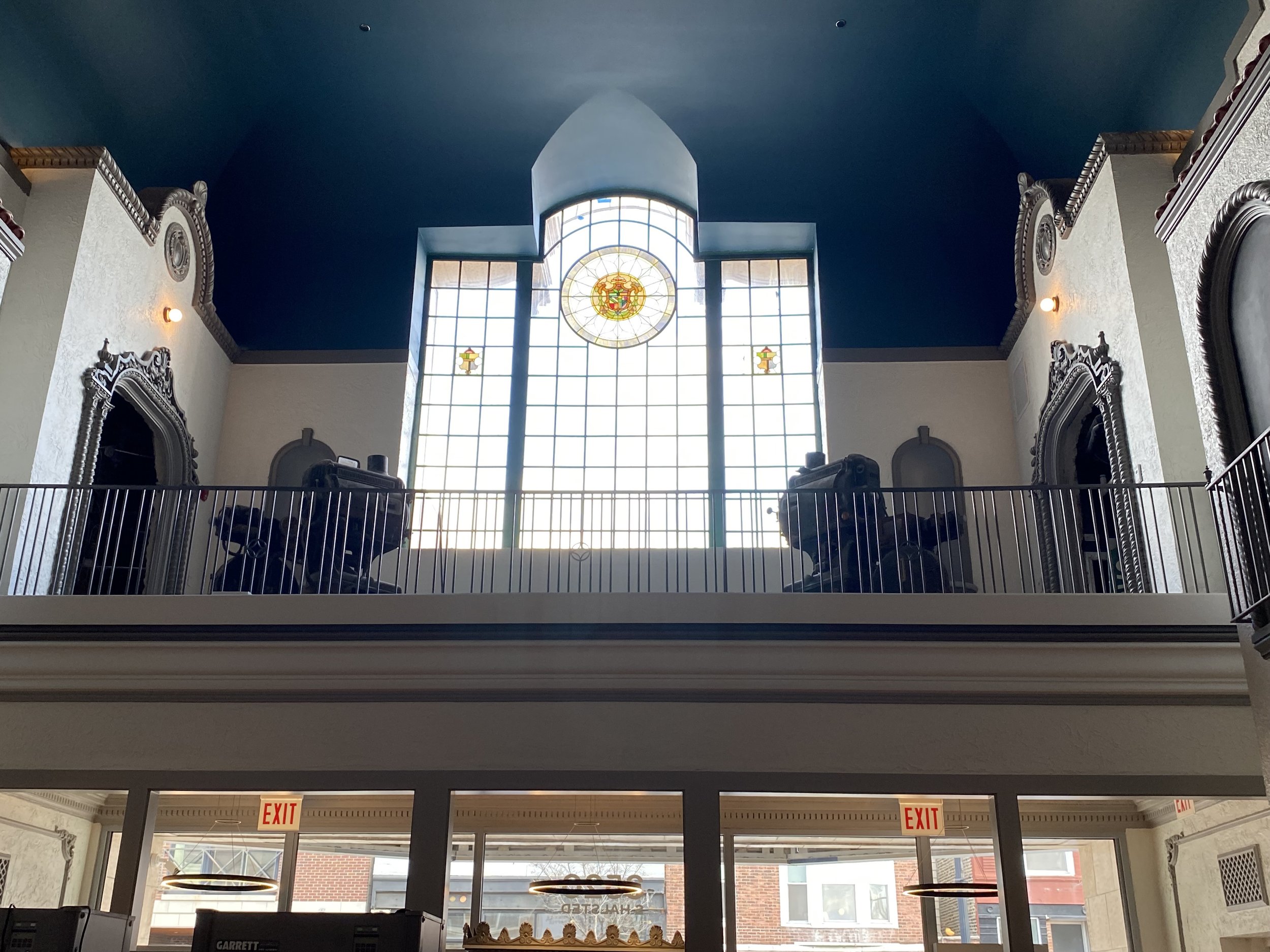Ramova Theatre
PC: Lois Kimmelman
By Lois Kimmelman, LEED AP
Interior of the Ramova
PC: Lois Kimmelman
Chicago’s storied Bridgeport neighborhood has been the home of mayors, police, and firefighters for years. But hidden in plain sight is another feature of that illustrious neighborhood: the almost century-old Ramova Theatre, newly renovated and reopened for business. Now it anchors a 36,000-square-foot entertainment complex including a live music hall, banquet space, brewery, and restaurant. The upstairs banquet space, called the “Ramova Loft,” was once a karate/boxing gym.
PC: Lois Kimmelman
The Ramova Theatre itself, truly a movie palace complete with a Spanish Baroque-style façade, accommodated 1,800 patrons. It first opened during the Great Depression in 1929. In its heyday, the historic landmark hosted scores of movies, from Old Yeller to Charlie Chaplin’s The Great Dictator, which premiered there in 1940. Finally, it closed in 1985. The City bought the vacant, vandalized venue in 2001 and began the laborious process of restoring its former grandeur. More than $350,000 was spent on roof repairs alone.
PC: Lois Kimmelman
For the next two decades, the Ramova remained dark, gathering dust and cobwebs. Enter an investment group headed by Tyler Nevius’ Our Revival Chicago in 2017, who forked over the grand sum of $1.00 to buy the building from the City. Thirty million dollars and change later, the new, improved Ramova was unveiled in late 2023, just in time for party hats to replace hard hats at the theater’s New Year’s Eve celebration.
PC: Lois Kimmelman
The design team, led by O’Riley Office, and the construction crew, helmed by McHugh Construction, had their work cut out for them. Among many other tasks, they renovated the deteriorating terra cotta façade; repaired the severely damaged plaster ceiling; installed LED lighting, motion sensors, water-conserving fixtures, and energy-saving appliances; put in a new tile floor in the theater entrance; removed the projection booth and all the old theater seats; and added a new stage plus a state-of-the-art “immersive sound system.” Many original materials were retained; for example, the original stained glass at the entryway had to be carefully removed, replaced and re-soldered. The maple floor of the Ramova Loft is original as well. Sustainable materials were used whenever possible, like reclaimed wood for tabletops in the restaurant. All this was done, of course, under the watchful eye of local historic preservationists.
Read more about historic buildings getting a green makeover on Lois Kimmelman’s website/blog, Historecycle. She promotes restoration and renovation, not demolition.





